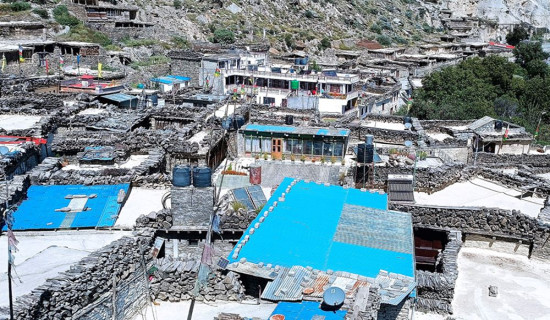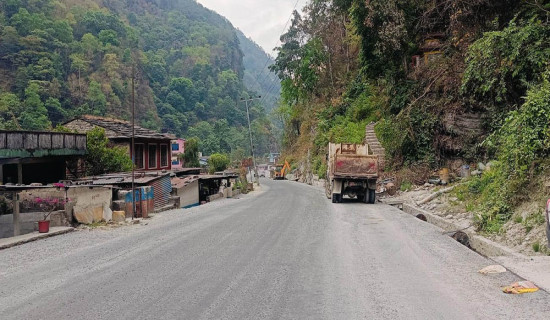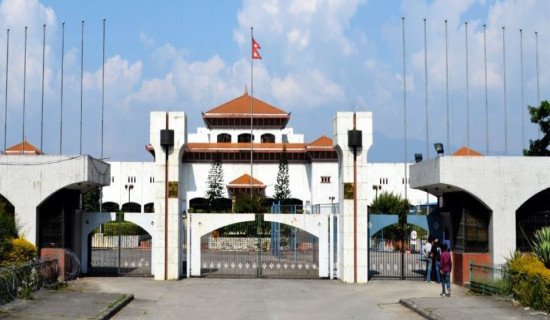- Friday, 2 May 2025
International Flights At GBIA
A Game Changer For Aviation Sector
With three international airline operators flying to and from Nepal’s second international gateway, Gautam Buddha International Airport (GBIA) in Bhairahawa, the country’s commercial aviation sector has indeed taken a significant step towards connecting western Nepal with the rest of the world. While the airport’s inauguration in May 2022 was met with a mix of optimism and scepticism, recent developments suggest the airport is now poised to play a transformative role in boosting Nepal’s aviation sector, particularly commercial aviation activities.
Though the airport remained without international flights for years, the recent commencement of international flights from GBIA by four airlines—Al Jazeera Airways, FlyDubai, Thai AirAsia, and Nepal Airlines—is indeed a promising shift towards operating another international airport in full flow, which will definitely ease the burden on Kathmandu’s Tribhuvan International Airport (TIA). The airport, which can handle 9.2 million passengers per year, is equipped with state-of-the-art facilities, serves as an alternative to the congested TIA.
Job creation
Meanwhile, another important international airline operator, Qatar Airlines, promised to operate flights to and from this airport. The likely operation of Qatar Airways will be a tremendous bonus as it operates its flights around the world, making Doha its transit base for international passengers. Many believe that residents from Lumbini province and western Nepal can benefit from international flights from this airport. Moreover, the influx of international visitors is expected to increase demand in the hospitality sector, including hotels, restaurants, transportation services, and retail. Increased investments and job creation are expected in the region, promoting economic progress, development and prosperity.
Operating international flights is a positive step towards provincial growth as well as boosting the significance of Lumbini, the birthplace of Lord Buddha, around the world. Located in south-central Nepal, a 280-km drive from Kathmandu, this airport boasts a 3,000-meter-long and 45-meter-wide runway, spanning 787 bighas (533 hectares). If serviced by sustained international flights, the airport and the town of Bhairahawa can become a prime destination for followers of Buddhism and tourists alike. A UNESCO World Heritage Site, Lumbini is described as having immense potential for tourism and direct international flights to GBIA that lies around 15-kilometres east of the famous Buddhist site and that provides easier access for global pilgrims and tourists, reducing the travel time, cost and inconvenience of transiting through Kathmandu.
Historically, the TIA has been Nepal’s only gateway for international visitors, immensely pressuring its capacity and infrastructure. Now, GBIA operating international flights has the potential to ease some of this burden. This is true as TIA has currently undergone runway and taxi park upgrades that necessitate a 10-hour closure daily for a period of five months. The upgrade works have forced airline operators to truncate the number of flights to Nepal, which would affect Nepal’s tourism and foreign employment sectors. Owing to the reduced hours of service at the TIA, the airline companies hiked ticket fares many folds, leading to an outcry, especially from the manpower business sector. However, airlines operators have offered concessional ticket fares to Bhairahawa that can lure more passengers from GBIA.
Despite the positive momentum at GBIA, built with a cost of around US$ 76.1 million funded by the Asian Development Bank, the OPEC Fund, and the Nepali government, Indian authorities continue to refuse to grant direct air routes for large passenger aircraft flying west from the airport, posing a significant obstacle. As a result, flights from GBIA are forced to take a longer route, bypassing Indian airspace. This increases operational costs for airlines, making them reluctant to fly to and from the GBIA. This restriction has a direct impact on the efficiency and appeal of GBIA as an international hub. Access to Indian airspace would enable airlines to offer shorter, more cost-effective flights, boosting passenger numbers and making Bhairahawa, also known as Siddharthanagar, a more competitive entry point into Nepal.
Meanwhile, the congestion in the TIA, which, according to a report, handled around 8.7 million passengers in 2023 alone, necessitates the operation of GBIA and another international airport at Pokhara. In the future, owing to its topographical limitation, the authorities cannot expand the TIA infrastructure, which would create an opportunity for Bhairahawa and Pokhara.
Some in Nepal suggest that the denial of direct flight routes may be geopolitically motivated. Delhi’s hesitation to wholeheartedly endorse the GBIA project is evident, with suspicions arising from China’s involvement and the potential for geopolitical tensions. Although India has cited concerns over air traffic safety and the impact on its own flight instruments as reasons for the restriction, the situation has sparked debates within Nepal about the underlying reasons for India’s reluctance. Reports suggest that India is averse to the idea of importing goods and services from Nepal that have Chinese components or investments. Currently, many Nepali industries struggle to export goods such as cement and iron made in Nepal with the Chinese investment.
Challenges
Despite the encouraging operation of three international and one domestic airline flight to and from the GBIA, challenges remain. The airport initially struggled with limited flights and operational hindrances, with some airlines suspending services because of low passenger numbers and logistical issues. However, the recent resumption of flights and the increase in scheduled services signal a turning point.
The government and the Civil Aviation Authority of Nepal (CAAN) must address concerns to capitalise on this momentum. This includes improving ground handling services, enhancing marketing efforts to attract more international carriers, and continuing efforts to resolve the airspace access issue with India. In the coming months, the true test will lie in how effectively the government and stakeholders utilise the recent achievements to create sustained aviation activities at his airport. With the right operational strategies, GBIA could very well be the key to boosting the aviation sector, the economic growth, and prosperity of the region and the country.
(Upadhyay is a former managing editor of this daily)













-original-thumb.jpg)


